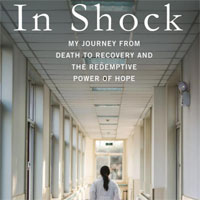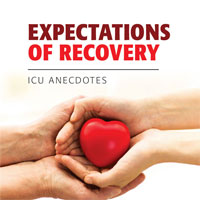Tag: recovery
Prolonged acute and post-acute care recovery of physical function in survivors of acute respiratory failure
The proportion of survivors of acute respiratory failure is growing; yet, many do not regain full function and require prolonged admission in an acute or post-acute care facility. Patients who require prolonged admission... read more
This Minimally Invasive Technique Could Reduce the Need for Open-Heart Surgery
Currently, the majority of individuals who undergo transcather aortic valve replacement (TAVR), a minimally invasive alternative to open-heart surgery—are elderly or subject to compounding complications such as kidney disease.... read more
Increased Hospital-Based Physical Rehabilitation and Information Provision After ICU Discharge
Post-ICU hospital-based rehabilitation, including increased physical and nutritional therapy plus information provision, did not improve physical recovery or HRQOL, but improved patient satisfaction with many aspects of recovery.... read more
ICU Survivors Have a Substantial Higher Risk of Developing New Chronic Conditions Compared to a Population-Based Control Group
ICU patients have more chronic conditions during the year before ICU admission compared with a population-based control group and a five times higher odds on developing one or more new chronic conditions compared with the... read more
I Spent 4 Weeks Near Death In The ICU
I spent 4 weeks near death in the ICU. Here's what I learned struggling for my life. My mind and body had to relearn everything: how to brush my hair, put on socks and take a sit-down shower. Although it was frustrating to... read more
Annals of B-Pod: Neurogenic Shock
Shock is defined as the failure of circulation to provide adequate oxygenation to meet cellular demand. To better identify and manage this compromised physiologic state, shock is subcategorized into four... read more
Clinics Aim to Improve Post-ICU Recovery
Ten days after arriving in the emergency department with pneumonia, 58-year-old Connie Bovier woke up in the intensive care unit (ICU). She survived acute respiratory distress syndrome (ARDS), sepsis, and a host of other... read more
In Shock: My Journey from Death to Recovery and the Redemptive Power of Hope
In Shock is a riveting first-hand account from a young critical care physician, who in the passage of a moment is transfigured into a dying patient. This transposition, coincidentally timed at the end of her medical training,... read more

Artificial Intelligence in the ICU
ICU doctors are often required to analyse large volumes of complex, heterogeneous data to make life-critical decisions. Artificial Intelligence (AI), if used effectively, could reduce this burden by transforming data into... read more
Early Resumption of β Blockers Is Associated with Decreased Atrial Fibrillation after Noncardiothoracic and Nonvascular Surgery
Resuming β blockers in chronic users by the end of the first postoperative day may be associated with lower odds of in-hospital atrial fibrillation. However, there seems to be little advantage to restarting on the day of... read more
Reprint of Recovery Programme for ICU Survivors Has No Effect on Relatives’ Quality of Life
The recovery programme intended for intensive care survivors did not have an effect on the relatives. Future recovery programmes should be targeted to help both patient and family, and future research should be conducted... read more
Surviving Refractory Out-of-Hospital Ventricular Fibrillation Cardiac Arrest
Multi-system organ failure is ubiquitous but treatable with adequate hemodynamic support. Neurologic recovery was prolonged requiring delayed prognostication. Immediate 24/7 availability of surgical and medical specialty... read more
Should ICU clinicians follow patients after ICU discharge? Yes
The trajectory of recovery from critical illness is often portrayed as a continuum. At one extremity lies an unstable patient dependent on life-sustaining treatments in the intensive care unit. At the... read more
Commencing out of bed rehabilitation in critical care – what influences clinical decision-making?
These results confirm previous observational reports that the presence of an endotracheal tube (ETT) remains a major obstacle to the provision of rehabilitation for critically ill patients. Despite rehabilitation being effective... read more
Probiotic and Synbiotic Therapy in the Critically Ill
Recent medical history has largely viewed our bacterial symbionts as pathogens to be eradicated rather than essential partners in optimal health. However, one of the most exciting scientific advances in recent years has been... read more
Early Versus Late Initiation of Renal Replacement Therapy in Critically Ill Patients
Early initiation of renal replacement therapy (RRT) effect on survival and renal recovery of critically ill patients is still uncertain. We aimed to systematically review current evidence comparing outcomes of early versus... read more
Predictors of Return to Work in Survivors of Critical Illness
Major trauma, lower GCS and increased hospital length of stay predicted inability to return to work due to health at six-months post-ICU admission. Compared to employed patients, those who had not returned to work reported... read more
Functional Recovery in Critically Ill Children, the “WeeCover” Multicenter Study
This study provides new information regarding functional outcomes and the factors that influence meaningful aspects of functioning in critically ill children. Identifying patients at greatest risk and modifiable targets for... read more
Expectations of Recovery: ICU Anecdotes
Most of us believe we know our loved ones' wishes. You may know what your father's favorite meal is or what he enjoys doing on a Sunday afternoon. But do you know if he would want a feeding tube if he can’t eat? These kinds... read more

How You Can Protect Your Parent From Delirium
Unlike dementia, which is constant and gets progressively worse, delirium tends to come and go, fluctuating even in the course of a day. The symptoms are transitory, yet for people who develop delirium, it can be the start... read more
Critical Hemoglobin Desaturation Will Occur before Return to an Unparalyzed State following 1 mg/kg Intravenous Succinylcholine
The American Society of Anesthesiologists (ASA) difficult airway algorithm recommends that if initial attempts at tracheal intubation after the induction of general anesthesia are unsuccessful, the practitioner should "consider... read more
Inspiratory Muscle Training for ICU Patients
Inspiratory muscle weakness is a known consequence of prolonged mechanical ventilation, and there is emerging evidence that specific inspiratory muscle training (IMT) can ameliorate this weakness. Australian researchers recommend... read more









